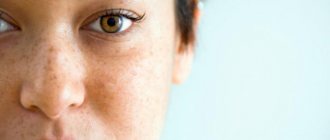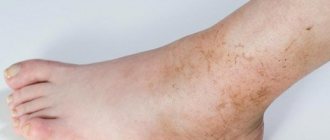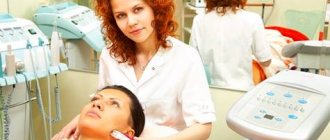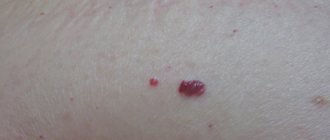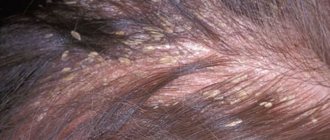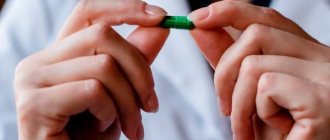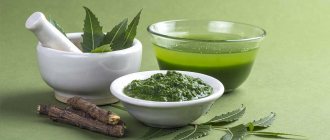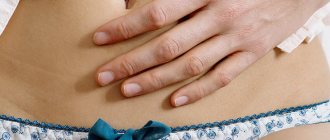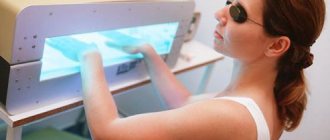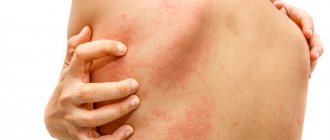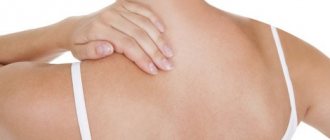The human skin is a mirror of various external and internal pathologies occurring in the body. Often yellow spots on the skin are the cause of many diseases. Therefore, if a person discovers yellowish or red-yellow spots on his body, he should undergo a full medical examination by a specialist. This is necessary to identify the cause of the formations, in order to then eliminate the defect, eliminating the dangerous effect on the body.
Common causes:
- Skin diseases;
- Increased fragility of blood vessels;
- Mechanical injuries;
- Systemic diseases;
- Violation of the metabolism of fats and carbohydrates.
Most often, however, this symptom is observed in skin diseases and allergic reactions.
Causes of yellow spots on the body
Yellowish manifestations on the integument of the body may be due to a violation of the physiology of the body as a whole.
Color ranges from pale yellow to dark brown. In women while pregnant, the appearance of yellow spots is not considered a pathology. This is a normal phenomenon, triggered by changes in the hormonal levels of a pregnant woman. Keloids and lingering scars may have a yellowish tint. In some cases, allergies to cosmetics may appear as yellow or red dots. Ultraviolet radiation with prolonged exposure can also cause yellowing of the skin.
The most common reasons:
- pathological changes in disruption of normal liver function;
- disruption of hormonal status;
- Addison's disease;
- allergies to cosmetics;
- allergic responses of adaptation type;
- oncology;
- metabolic disorders, in particular fat metabolism;
- diabetes;
- some diseases of organ systems;
- dermatitis.
Newborn babies in the first days of life are susceptible to yellowing of areas of the skin when meconium penetrates into the waters surrounding the fetus. The presence of yellowish spots on the skin of newborn babies may be a sign of infection or systemic pathology.
With such manifestations, contacting a doctor is not discussed. Treatment at home can lead to complications in the baby’s condition and complicate the subsequent work of the diagnostician.
Other reasons:
- Cutaneous lichens and urticaria can cause the appearance of yellowness of the epidermis.
- The effects of toxins are sometimes accompanied by yellow spots on the skin.
- Smokers often have yellow spots on their fingers.
- Excessive consumption of carrots and pumpkins can cause yellow skin pigmentation.
Please note that yellow spots on the upper limbs may be a result of cirrhosis of the liver. In this case, there is a decrease in tone, lethargy, and thinness.
Symptoms that help diagnose the disease
- With dermatitis, patients complain of the appearance of yellow spots on the head, arms, and legs. The spots can be single or multiple, their number can increase, and the color can change from light yellow to brown. Patients experience peeling of the rashes; tissue maceration, erosion, and the formation of blisters may occur in the area of yellow spots. Sometimes there is a deterioration in the condition of the whole organism.
- Fat metabolism problems also manifest themselves as spots on the skin of the back or in the sternum area. At the same time, there is a tendency towards an increase in the surface area of the pigmentation zone and conglomeration of spots into continuous zones of yellow spotting. When lipid metabolism is disrupted, the spots do not peel off, as with dermatitis, and there is no itching. This violation is not critical, but does not relieve the patient of the need for medical support.
- Diabetes mellitus in the early stages can be indicated by the appearance of yellow spots. Its development is indirectly evidenced by the gradual development of spotting against the background of decreased body weight, the desire to drink a lot of water, and frequent urination. The spots transform into conglomerates with a flaky surface and gradually acquire a brown tint.
If you feel dizzy due to spotting, swelling of your legs, decreased immunity, or pain in the heart area, go to the hospital immediately. Self-medication is unacceptable.
Addison's disease, in which yellow spots spread over the arms and face, has the following clinical symptoms:
- constantly dizzy;
- a person feels frozen and cannot warm up;
- rapid fatigue sets in;
- appetite decreases;
- weight loss;
- nausea appears;
- the character of the stool changes.
Urticaria pigmentosa
It is characterized by an excessive accumulation of mast cells in the skin. This is a special form of white blood cell. The disease can be hereditary or occur against the background of infectious processes. Mast cells interact with melanocytes and provoke the accumulation of pigment in the lower layers of the epidermis. There are many forms of the disease. In some of them, yellow spots with an uneven surface appear on the body. When rubbed, they thicken and become tumor-like. Itching is a must. If the pathology occurs in a child, in most cases it is not treated. By adolescence, everything usually goes away on its own. In adults, urticaria pigmentosa is more severe and chronic. In this case, complex drug treatment and physiotherapeutic procedures are necessary.
Color gradation of yellow spots on the skin
Different concentrations of the melanin pigment cause differences in the color shades of yellow spots. With a high pigment content, the spotting is brown, sometimes reddish. Differences in shape, color and size are due to several reasons.
- Dark brown spotting is observed with hereditary skin diseases and withering of the body in old age.
- Yellow-brown spots can change color. There is a risk of transformation of such spots into neoplasms, malignant tumors.
- Dark yellow, round spots that do not cause discomfort are often ordinary moles. If they degenerate, there is a danger of oncology.
- Hypovitaminosis is often the cause of yellow spots. The best treatment in this case is to enrich the diet with multivitamins.
- Yellow spotting of the skin of the legs is evidence of impaired muscle trophism due to impaired blood circulation. The probable causes of the appearance are diabetes mellitus or atherosclerosis of the circulatory system of the lower extremities.
- Harmless freckles are yellow pigmentation of certain areas of the skin, characteristic of the spring-summer period.
We recommend:
White spots on the skin;Red spots on the chest - causes;
Dark spots - .
Prevention
As you know, it is easier to prevent any disease than to deal with its consequences. Not always, when the root cause of the formation of yellow spots is identified, they can be eliminated using the methods of modern medicine.
For prevention, it is extremely important to protect the skin from prolonged exposure to harmful solar radiation. Simply covering sensitive areas of skin is not enough. In summer, it is recommended to use effective products with a high level of protection against ultraviolet radiation. Moreover, they must be applied evenly over the entire surface of unprotected skin.
If yellow spots appear, you should limit yourself to eating fatty foods and dishes based on ingredients of animal origin. It is advisable to give up alcohol and smoking tobacco.
Yellow spots on the body in children
Yellow spots on the skin in children may be accompanied by itching and burning. Sometimes the reason lies in a sexually transmitted disease passed from mother to child. Allergies to medications can also cause spots to appear in children.
In some cases, yellow skin pigmentation is not accompanied by itching and burning. Such manifestations may signal the onset of chickenpox. In this case, you need to visit a doctor.
If your baby's skin turns an intense yellow orange color in the first days after birth, the cause may be hemolytic disease of the newborn, which occurs in the form of jaundice.
The reason is Rhesus conflict between mother and child, see a doctor immediately! Physiological jaundice in children also manifests itself as yellowing of the skin. The newborn's liver is not able to cope with the high content of bilirubin in the blood. It usually goes away within a couple of days.
You can often find yellow birthmarks on the skin of newborn babies. Half of newborns have vascular capillary hemangiomas on the scalp or lips. They go away on their own, usually in the first year of life.
Additional diagnostics
Why dark spots appeared on the skin of the hands or in other parts of the body, the doctor will tell you. After a clinical examination, he will prescribe a number of additional diagnostic procedures to clarify the cause and nature of the process. They may be:
- Complete blood count (erythrocytes, platelets, hemoglobin, ESR).
- Biochemical blood test (adrenal hormones, electrolytes, glucose, carotene).
- Scraping of affected areas (microscopy).
- Iodine test (Balzer) and examination under Wood's lamp.
- Dermatoscopy.
Each condition requires an individual approach and a full examination. Only then will yellow spots on the body cease to be a source of concern when their cause becomes known. The pathological process requires appropriate treatment, and a cosmetic defect can be eliminated using hardware procedures or other means.
It is believed that pigment spots on a woman’s hands can appear with age. This opinion is widespread and erroneous, because a brown spot, a whole scattering of marks, can appear at absolutely any age. The reasons for the appearance of spots are not only age-related, they are associated with hormonal characteristics, skin reactions, allergies, and even general phenotypic characteristics. However, dark spots can be removed.
Treatment methods
Diseases of the skin, internal organs, and infections should be treated exclusively by specialists.
If you have vitamin deficiency, then mineral complexes and multivitamins will help. For preventive purposes, they can be taken even in the absence of a doctor’s prescription.
You can remove pigmentation on the skin like this:
- peeling (ultrasonic, mechanical, acid-based);
- laser therapy, phototherapy;
- non-traditional folk medicine.
Laser therapy allows you to remove the dead layer of the epidermis. This correction should be done in winter. Phototherapeutic procedures involve the destruction of yellow pigment by rays with a certain frequency.
Folk remedies
At the pharmacy you can buy products for removing yellow spots from the skin:
- Hydrogen peroxide 3%. Apply to the area of yellow spots until completely removed. Can be applied two to three times a day.
- A zinc-based paste will help whiten spots.
- White clay masks provide a brightening effect. They are perfect for delicate, sensitive skin.
To whiten the skin, it is recommended to use masks and lotions based on well-known products:
- Cucumber mask. Cucumbers are finely grated, applied to the face and left for 15 minutes.
- Cucumber lotion. Freshly squeezed juice is mixed with vodka in a ratio of 3:1. Wipe your face morning and evening.
- Lemon juice lotion has a pronounced bleaching effect. Freshly squeezed lemon juice is mixed with vodka in a 1:1 ratio.
- Tincture of parsley leaves. Dry leaves are poured with boiling water in a ratio of 50 g per 200 ml of water, left for 7 hours. Filter and wipe the yellow areas of the skin twice a day. Store in a cool place.
- Kefir and fermented milk products. Kefir and fermented milk products are used to wipe yellow areas of the skin, and sour cream is used as a mask. This product will have a nourishing effect.
- Lemon and honey mask.
Yellow spots on the face: causes and treatment
Yellow spots on the skin of the face can be represented by small growths of fatty and connective tissue.
One example is Fordyce granulomas - white nodular papules with yellowish discoloration on the edges of the lips. This disease cannot be cured in our time. Carotene is a prophylactic agent. Old papules are removed using laser correction. If you have become the owner of yellow spots on your skin, this is a reason to be wary. After all, they are a sign of a serious metabolic disorder of fats, especially cholesterol.
Remember that yellowing of the skin can often be a warning sign that something is wrong with your body. Get examined by a doctor who will prescribe effective treatment.
Remedies
When diagnosing xanthomas, first of all, you need to monitor your diet. It is recommended to avoid drinking alcoholic beverages, dishes and foods containing large amounts of animal fats. Particular attention should be paid to the level of cholesterol in the blood; if it increases, it is recommended to take medications prescribed by the doctor.
If the xanthomas are large and cause a cosmetic defect, they may need to be removed. This can be done using:
- electrocoagulation;
- laser;
- surgical intervention.
For treatment to be effective, it is necessary to determine the root cause of xanthomas and eliminate it. After this, they can disappear on their own without outside help.
to the table of contents?
